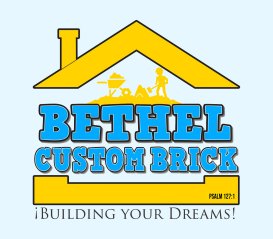Chimneys in older properties are more than just functional features—they are architectural landmarks that tell a story about the home’s history and craftsmanship. However, preserving these structures comes with unique challenges. Age, weather exposure, and outdated construction methods can contribute to significant wear and tear, making regular maintenance and specialized repairs essential for their longevity.
Here’s a closer look at the challenges of preserving chimneys in older properties and how homeowners can overcome them.
1. Deteriorating Materials
Older chimneys were often built using materials and methods that are not as durable as modern options. Over time, bricks, mortar, and liners can degrade, leading to:
- Spalling Bricks: Bricks that flake or crumble due to water absorption and freeze-thaw cycles.
- Cracked Mortar Joints: Mortar that deteriorates with age, weakening the chimney’s structural integrity.
- Damaged Chimney Liners: Original liners, if present, may not meet current safety standards or could be significantly worn.
2. Water Damage
Water is one of the biggest threats to older chimneys. Without modern waterproofing techniques, chimneys in older properties are particularly vulnerable to:
- Efflorescence: White stains caused by salt deposits left behind as water evaporates from the masonry.
- Leaks: Water infiltration through cracks in the chimney crown, flashing, or bricks, leading to interior damage
- Mold and Mildew: Persistent moisture creates the ideal environment for mold growth, which can affect the home’s indoor air quality.
3. Shifting Foundations
The natural settling of a home over decades can impact the stability of the chimney. Signs of foundation issues include:
- Leaning Chimneys: A chimney that tilts away from the house is a serious safety concern and requires immediate attention.
- Cracks in the Masonry: Large cracks may indicate structural shifts, which compromise the chimney’s integrity.
4. Outdated Construction Techniques
Many older chimneys were built without the benefit of modern safety codes or advancements in masonry. Common issues include:
- Lack of Chimney Liners: Unlined chimneys were common in older properties, posing fire and carbon monoxide risks.
- Insufficient Flashing: Flashing used in older chimneys often deteriorates quickly, allowing water to seep in.
- Substandard Mortar Mixes: The mortar used historically may lack the strength and durability of modern formulations.
5. Weather-Related Wear
Chimneys are constantly exposed to the elements, and older structures often bear the brunt of years of rain, snow, and temperature fluctuations. These factors contribute to:
- Freeze-Thaw Damage: Water that seeps into the masonry freezes and expands, causing cracks and spalling.
- Wind Erosion: High winds can weaken mortar joints and dislodge loose bricks.
- UV Damage: Prolonged sun exposure can dry out and weaken mortar over time.
6. Difficulty in Matching Materials
Restoring older chimneys often requires materials that match the original construction for both functional and aesthetic reasons. Challenges include:
- Sourcing Period-Appropriate Bricks: Finding bricks that match the size, texture, and color of the original materials can be difficult.
- Replicating Mortar Composition: Using the wrong type of mortar can cause further damage to the chimney.
How to Overcome These Challenges
Preserving chimneys in older properties requires a combination of specialized skills, modern techniques, and regular maintenance. Here’s how homeowners can protect these historical features:
- Schedule Regular Inspections: Annual inspections by a professional chimney expert can identify issues early, preventing costly repairs down the line.
- Repoint Mortar Joints: Repointing involves removing and replacing damaged mortar to restore the chimney’s stability and appearance.
- Replace or Repair Damaged Bricks: Spalling or cracked bricks should be replaced with period-appropriate materials to maintain the chimney’s authenticity.
- Install a Chimney Cap: A chimney cap protects against water, debris, and animal intrusions, reducing wear and tear on the structure.
- Waterproof the Masonry: Applying a breathable waterproofing sealant prevents moisture infiltration while allowing the masonry to release trapped water.
- Reline the Chimney: If the chimney lacks a liner or the existing liner is damaged, relining improves safety and efficiency.
- Address Foundation Issues: A leaning chimney or cracks caused by shifting foundations require professional stabilization or rebuilding.
The Importance of Professional Expertise
Restoring and preserving older chimneys is not a DIY task. It requires an understanding of historical construction methods, access to authentic materials, and the skills to execute repairs without compromising the structure’s integrity. Professionals can ensure that the chimney meets modern safety standards while maintaining its historical charm.
Bethel Custom Brick – Expert Chimney Preservation Services in the Detroit Metro Area
At Bethel Custom Brick, we understand the unique challenges of preserving chimneys in older properties. Serving the Detroit Metro area, our skilled team specializes in restoring and maintaining historical masonry chimneys with the utmost care and attention to detail. Whether you need repairs, waterproofing, or a full restoration, we use period-appropriate materials and techniques to protect your home’s legacy. Contact us today to schedule an inspection and let us help you preserve your chimney for years to come.


